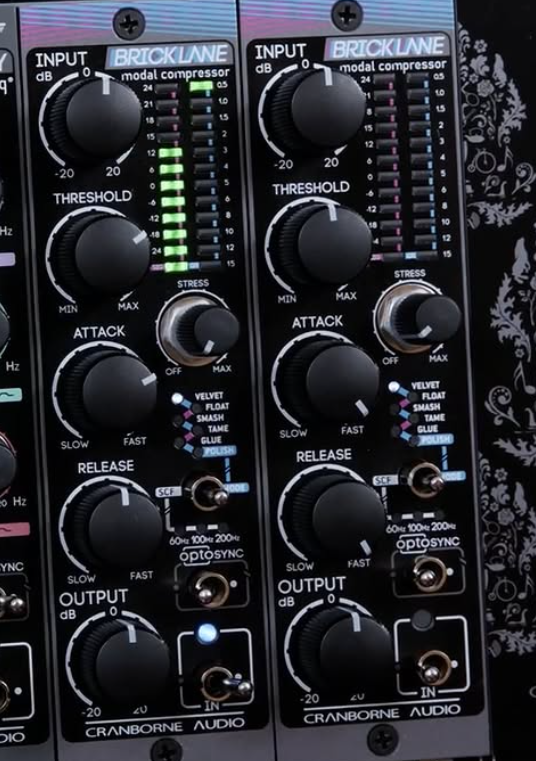Never heard of PWM compression? You are really missing out!
You probably know FET-Compressors, optical, Vari-Mu- and VCA-designs. But PWM? It is safe to say this compression method is still something of a hidden secret: Studio gear using this technique are rare. But the concept is definitely worth a look.
So what is this „PWM“ thing anyway?
You might have heard of PWM in the context of synthesizers. PWM stands for pulse width modulation: A square oscillation can be modulated by altering the width of the squares. Used in sound synthesis, this leads to a change in the signal's spectrum.
PWM compressors, though, use this technology in a different way. Your audio signal, instead of a VCA, FET, opto cell or a tube, runs through a part effectively behaving like an on/off switch. That's right: just like a mute switch. But switching happens at a high and constant rate, which is part of the trick.
The sidechain detector signal, shaped by threshold, attack and release settings, is fed into a pulse-width modulation generator running at a fixed carrier frequency of typically hundreds of kHz or higher. The level of the analog sidechain alters the symmetry of the square pulse, hence the term pulse width modulation.

This PWM signal drives the high-speed switch in the audio path. In each PWM cycle, the switch closes the analog signal path for a time proportional to the desired gain reduction.
You may have flinched reading these sentences. Chopping the precious audio? Rest assured that the switching does not harm the sonic quality. The switching frequency itself is so high that the human ear can never detect it and only perceives the average.

Compare it to a LED light dimmer: An LED itself can only be either on or off. If it needs to be dimmed, a high speed switch operates quite the same way – and at a frequency a human is impossible to notice. Nonetheless the audio is being low-pass filtered after the switch to prevent any form of unwanted audio artifacts.
And there you have it, the basic principle of a PWM compressor.
Benefits of PWM compression:
• very quick and snappy
• very precise and transparent
• can achieve very low distortion figures
• huge dynamic range
Which PWM compressors are out there?
You can try to get your hands on one of the original PWM compresors from PYE from England. Good luck! And one compressor you might have heard of is the D.W. Fearn VT-7, the tube behemoth from the US. No wonder it is being praised for sounding both rich and precise, it is a PWM, not a vari-mu or opto! The single-channel Hazelrigg Industries VNE, also a tube design, uses the same PWM circuit.
It is fair to say both the Fearn and Hazelrigg are a costly, yet worthwhile investment. Without the tubes, PWM compression does not set you back that much: The Hazelrigg DNE is a Series 500 processor, using PWM aswell. Another very interesting option is the Great River PWM-501.
And there is a new cat in town: Cranborne just introduced the Bricklane Compressor! It uses „Modal PWM“, as Cranborne call it. You get to choose from six different modes, affecting the knee and timing behaviour of the sidechain: Velvet, Float, Smash, Tame, Glue and Polish. It's easy to imagine that „Tame“ refers to 1176-style compression while „Glue“ is something usually associated with the old SSL bus-comp. Harmonic enrichment is preset by the the set mode and can be modified by the „Stress“ control. With the Cranborne Audio Bricklane Compressor, PWM compression is used to create a very versatile compressor for your Series 500 rack – and a really affordable one, too!
